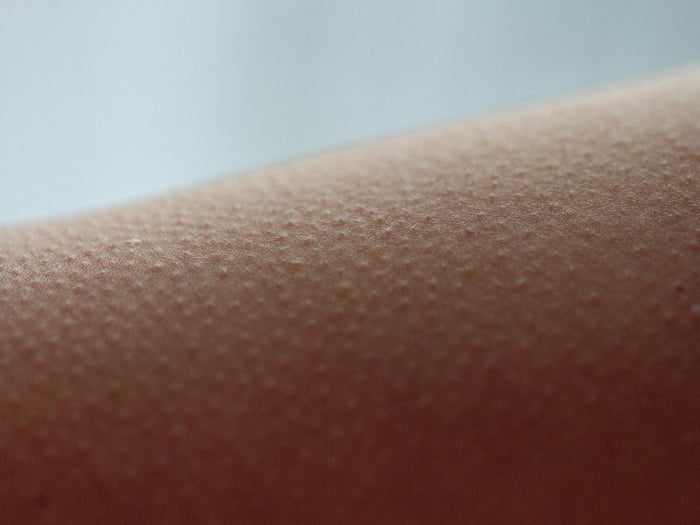Goosebumps have always fascinated us, from Charles Darwin to modern scientists. Now a team from Harvard University may have finally cracked the mystery behind out. Their recent research, published in the journal Cell, shows that the evolution of goosebumps could be linked to our hair. The cells that cause goosebumps are also associated with the regeneration of hair follicles and hair. The formation of a goosebump involves the hair follicle and sympathetic nerves. [1]

Goosebumps are our body’s response to external stimuli. Photo Credit: Shutterstock
Sympathetic nerves are part of our nervous system which dictates our response to external stimuli and controls body hemostasis. It is connected with tiny smooth muscles, which in turn are connected to hair follicle stem cells. Hence, the muscle that contracts to make a goosebump acts as a bridge between the hair follicle and the sympathetic nerves. In cold conditions, the sympathetic nerves react by contracting the muscle, which forms the goosebump. It also drives stem cell activation for hair follicle growth. In the long-term, it induces new hair growth.
The researchers also found that when under prolonged cold conditions, the nerve activity was heightened with a higher release of neurotransmitters. The stem cells were activated, which triggered the regeneration of hair follicles and hair growth. When the tiny bridging muscles were removed, the sympathetic nerves retracted and the nerve response for hair stem cells was also lost, showing that the muscles were an important part of the process.
The researchers found that the process evolves with our hair follicles. It secretes a type of protein that forms the muscle. This attracts the sympathetic nervous system.
